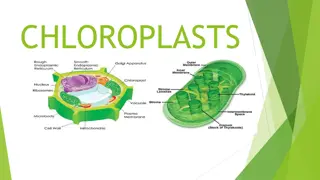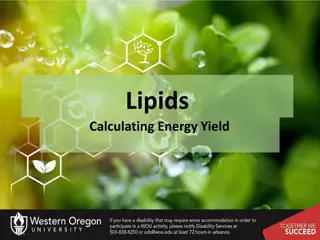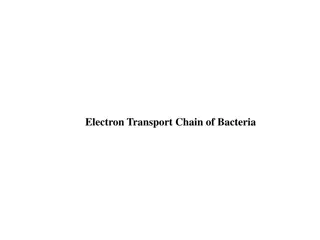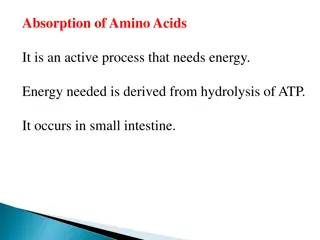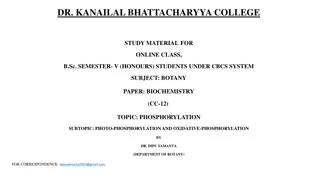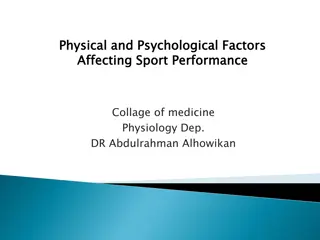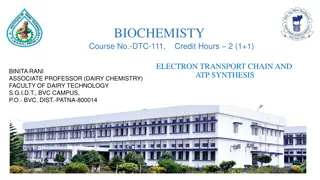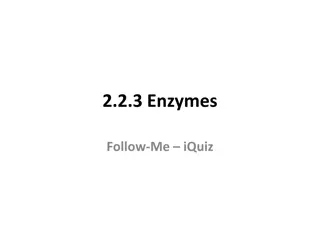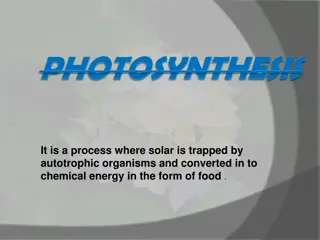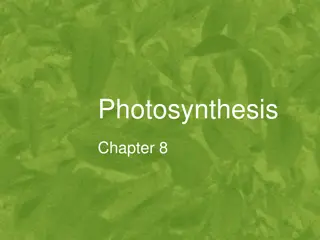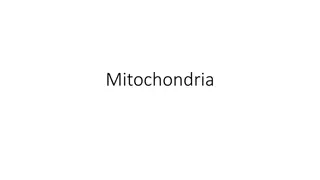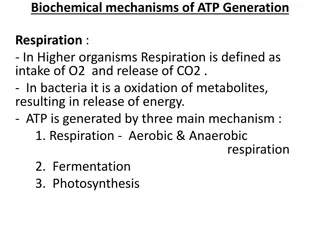
Understanding the Role of ATP in Cellular Energy Production
Explore the structure and function of ATP, the universal energy currency in cells. Learn about the importance of ATP in biological processes, including synthesis, transport, and movement. Discover how ATP provides immediate energy for cellular activities and the significance of its constant usage and regeneration.
Download Presentation

Please find below an Image/Link to download the presentation.
The content on the website is provided AS IS for your information and personal use only. It may not be sold, licensed, or shared on other websites without obtaining consent from the author. If you encounter any issues during the download, it is possible that the publisher has removed the file from their server.
You are allowed to download the files provided on this website for personal or commercial use, subject to the condition that they are used lawfully. All files are the property of their respective owners.
The content on the website is provided AS IS for your information and personal use only. It may not be sold, licensed, or shared on other websites without obtaining consent from the author.
E N D
Presentation Transcript
Learning Objective The structure of ADP and ATP as phosphorylated nucleotides Comprising a pentose sugar, a nitrogenous base and inorganic phosphate
Page 80 Why do organisms need energy? Three main uses of energy Synthesis e.g. making bigger molecules Transport eg active transport Movement eg muscle contraction
ATP- A universal currency It is a molecule which provides energy for most cells in all kingdoms It powers most reactions in cells
Adenosine triphosphate What is ATP? phosphate group(s) added A phosphorylated nucleotide sugar, base and phosphate group Base P S http://upload.wikimedia.org/wikipedia/commons/thumb/2/22/ATP-3D-vdW.png/280px-ATP-3D-vdW.png
Base = adenine Sugar = Ribose
ADP + Pi ATP The energy release is coupled to an energy using process. As the energy is released it is immediately used. The energy released from the hydrolysis of ATP is an immediate source of energy for biological processes H O ATP is constantly used and reformed The hydrolysis of ATP releases 30.6 kJ mol-1
Energy stores 1. Where does the energy come from to make ATP? Other energy reserves such as carbohydrates and fats are used to keep the ATP levels up 2. Why do cells have relatively small quantities of ATP available? The phosphate bonds are not very stable so only a little energy is stored here 3. Why is it less efficient to couple reactions to the oxidation of glucose or fats? ATP hydrolysis is a very immediate source of energy compared to oxidation of glucose or fats which involves many steps catalyses by a different enzyme
i. Name the parts of the ATP molecule labelled X,Y, Z X .. X Y Z Z ... ii. With reference to the diagram, describe and explain the role of ATP in the cell Y (3)
Adenine Phosphates Ribose
Advantages of ATP as an energy source Easily hydrolysed and reformed by condensation (only 1 enzyme is involved). Small quantities of energy provided rather than a lot which would be wasted as heat Water soluble (unlike fats and polysaccharides) Small and easily moved around cells to where ATP is required
Suggest 2 similarities and 2 differences between the structures of DNA and ATP SIMILARITIES DIFFERENCES Both contain a nitrogenous base (adenine) Only adenine in ATP but DNA can have 3 others too Thymine, Cytosine and Guanine DNA has deoxyribose RNA has ribose Both contain phosphate A DNA nucleotide has only 1 phosphate group but ATP has as many as 3 Both have a pentose sugar DNA is arranged as a double helix and is a very large macromolecule. ATP is small.
ATP in the course A greater understanding of the role and synthesis of ATP will be covered in more detail in year13 during the topics of Photosynthesis Respiration Questions about ATP are likely to be very synoptic.





